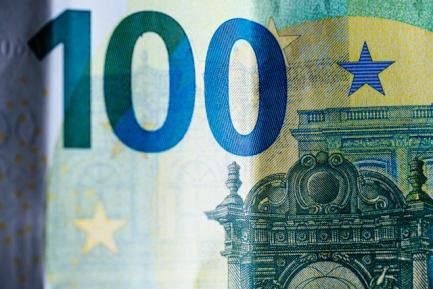The public accounts in 2022: shifting from cyclical spendingto structural spending
The Spanish government has presented to parliament the Draft General State Budgets for 2022 and has sent to Brussels its Budget Plan showing a picture of the consolidated general government accounts. What lies behind these figures? In which categories will the deficit reduction be concentrated?

The Spanish government has presented to parliament the Draft General State Budgets for 2022 and has sent to Brussels its Budget Plan showing a picture of the consolidated general government accounts. In terms of the public deficit, this is expected to stand at 5.0% in 2022, representing a reduction of 3.4 pps compared to the deficit projected for 2021, mainly thanks to the economic recovery. Consolidated public revenues for the general government as a whole are expected to increase by 4.6% year-on-year (7.1% compared to 2019). On the expenditure side, pensions will be revalued based on the average inflation from December 2020 to November 2021, and public expenditure in 2022 is expected to fall by 2.2% year-on-year (the increase versus 2019 is 12.0%). But what lies behind these figures? In which categories will the deficit reduction be concentrated?
The projected increase in revenues (excluding NGEU) for 2022 is essentially cyclical, as it will come from the improvement in the economy.1 The biggest increases in revenues compared to 2019 will be in direct taxes (+16.3 billion euros, with an increase in revenues from personal income taxes of more than 13 billion euros) and social security contributions (+12.6 billion euros). Indirect taxes, meanwhile, will register more contained growth (5.2 billion euros), with VAT revenues increasing by 4.1 billion euros compared to 2019. These projections are based on the good income data in the 2021 budget execution,2 as well as on a forecast for revenue growth in 2022 which could be somewhat optimistic given the GDP growth on which it is based.3
- 1. Except for a minimum corporate tax rate of 15%, no additional income-side measures are included in the 2022 General State Budgets. The increase in corporate tax collections as a results of this measure (estimated by the Treasury at 400 million euros per year) would not occur until 2023.
- 2. The government projects growth of 2.3% in public revenues in 2021-2019 and the budget execution data up to August (cash accounting) indicate very strong growth of 3.9%.
- 3. Real GDP growth forecasts of 6.5% in 2021 and 7.0% in 2022.

With regards to public expenditure (excluding NGEU), there is a marked contrast between cyclical components, which naturally are expected to decrease compared to the years of the pandemic, and structural items, which look set to increase significantly compared to the years of the pandemic as well as compared to pre-COVID years.
In particular, the reduction in the consolidated general government expenditure projected for 2022 compared to 2021 is concentrated in the components related to boosting economic activity, as well as those related to the fading of the pressure on the public accounts of expenditures that have helped to attenuate the health and economic consequences of the pandemic. Thus, expenditure on unemployment benefits is expected to reduce by 6.6 billion euros compared to 2021. Also, expenditure on furlough schemes (excluding the exonerations of social security contributions) is expected to fall by 5.45 billion euros. On the other hand, state transfers to the Autonomous Community regions are expected to decrease significantly, since in 2022 special transfers under the COVID Fund, which amounted to 13 billion euros in 2021, will cease.4 Finally, it should also be noted that the reduction in interest rates will provide a further boost to the public accounts: the burden of interest payments as a percentage of GDP will be reduced once again (from 2.1% in 2021 to 2.0% in 2022).
In contrast, structural expenditure, which is not directly dependent on the business cycle, will increase significantly and is the primary reason why public expenditure is expected to rise by 63 billion euros compared to 2019. In particular, social benefits (pensions, minimum subsistence income, etc.) are expected to increase by 27.1 billion euros compared to 2019 and staff costs by 15.1 billion euros.
As a consequence, the structural deficit of the Spanish economy, which was already relatively high before the pandemic, is expected to increase further still. Specifically, according to CaixaBank Research estimates, it could rise from 3.7% of GDP before the pandemic to around 5% in 2022. The reduction in the public deficit anticipated in 2022 is a very encouraging sign given the high level of debt, but the increase in the structural deficit, if no action is taken, will make the process of cleaning up the public accounts more difficult in the medium term.
- 4. This reduction will be offset slightly by the compensation to the regions of some 7 billion for negative settlements as well as the adoption of the computer-based VAT collection system.




